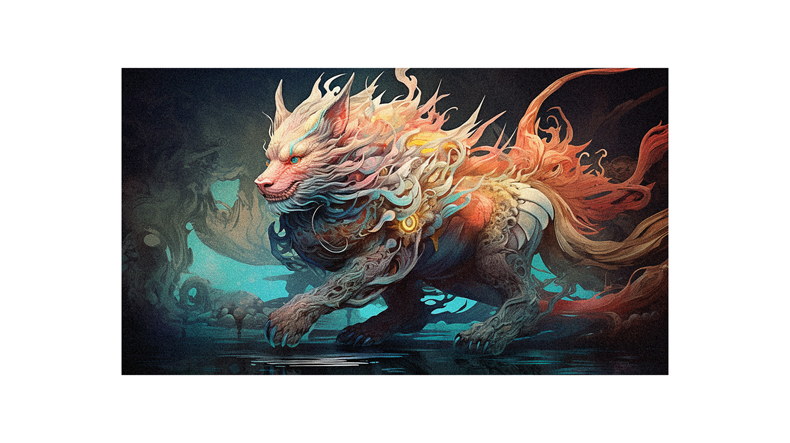Are you a fantasy artist looking to push your craft to the next level?
Comparative Anatomy for Fantasy Artists is your guide to becoming a master of creature design. Think of it as your mentor, walking you through the zoological knowledge, anatomy, and movement needed to bring your mythical creatures to life.
With step-by-step exercises, you’ll learn to distort and develop the human figure, create convincing facial expressions, and craft dynamic poses for your superheroes, villains, and fantasy females.
Like a map to an unknown world, this book will help you navigate the uncharted territory of creature design, unlocking your potential to make your artwork truly extraordinary.
The Importance of Studying Realistic Animal Structure
For fantasy artists, studying realistic animal structures is essential for creating lifelike creatures and evoking emotion in their audience. It’s important to understand the anatomy and musculature of animals and how they move. This knowledge will help you accurately depict creatures in your art, even if they don’t exist in real life. You’ll be able to identify any anatomical inconsistencies and correct them, as well as create unique figures with your style.
You can also use this knowledge to create creatures that appear in motion, which can help convey a sense of excitement or danger in your art. Additionally, you can use familiar animal features to represent characters in your work while making them seem unique and original. Understanding animal anatomy will give you the foundation to create fantastic fantasy art.
Applying Zoological Knowledge to Mythical Creatures

By combining zoological knowledge with mythical features, artists can create creatures that defy convention and push boundaries.
Fantasy artists can learn much by studying real-life animals and applying that knowledge to their work. Every creature, whether real or imaginary, has an anatomy that can be studied and used to create believable characters. By applying the principles of zoology, artists can add realism and depth to their work while still incorporating fantastical elements.
For example, studying different species of birds can help artists understand how to create a creature with wings. By looking at the anatomy and structure of a bird’s wings, an artist can learn how to create a believable set of wings for a mythical creature. They can also use the knowledge from studying birds to understand how the wings can move and interact with other parts of the creature’s body.
In this way, fantasy artists can create believable and unique creatures. By combining zoological knowledge with mythical features, artists can create creatures that look and feel real while still being fantastical. This helps create a more immersive experience for viewers and allows artists to express their creativity in new and exciting ways.
Mastering the Art of Creature Design

Mastering the art of creature design requires knowledge of zoological principles and a willingness to push the boundaries of imagination. Take the basics of human anatomy and use them as a starting point.
Learn how to manipulate skeletal structures, muscles, and movements to create fantasy characters that look realistic. Consider distorting, developing, and transforming the human figure to create unique, imaginative creatures. You must also understand facial expressions, hands, and body language.
Practice perspective and composition to make your characters look lifelike and dynamic. Finally, don’t forget to add emotion and action to your creatures. With these tools, you can create believable characters and creature designs.
Anatomy and Movement in Fictional Species

Creating believable fictional species involves understanding the anatomy and movement of creatures and how to manipulate body structures, muscles, and expressions. To do this, it’s essential to have a basic understanding of anatomy and how it works.
Anatomy for Fantasy Artists is a great resource to help you learn these principles. It covers the basics of human anatomy, facial expressions, hands, and body language and instructs on distorting, developing, and transforming the human figure. It also provides practical exercises and demonstrations to help you learn how to create dynamic poses for your characters.
It teaches techniques for rendering characters in action poses and expressing emotions. Additionally, it reviews principles of perspective and composition to help you create practical illustrations. With this knowledge, you can create dynamic and believable fantasy characters.
Tips for Creating Convincing Imaginary Beasts

Bring your imaginary beasts to life with tips from Anatomy for Fantasy Artists! Get creative with the anatomy of your creatures, combining human and animal features for a unique look. Learn the basics of perspective and composition to give your beast a convincing form.
Master your character’s subtle movements and expressions, making them look alive. Examine the principles of skeletal structure and musculature to make your imaginary creature seem real. Use the step-by-step exercises and demonstrations to hone your skills. Follow the detailed artist references and instructions to create dynamic poses.
Finally, develop your artistic style by breaking and bending the rules of anatomy. With these tips, you can create believable and captivating imaginary beasts.
Follow us on Pinterest for more tips, tutorials, and artist reviews!





